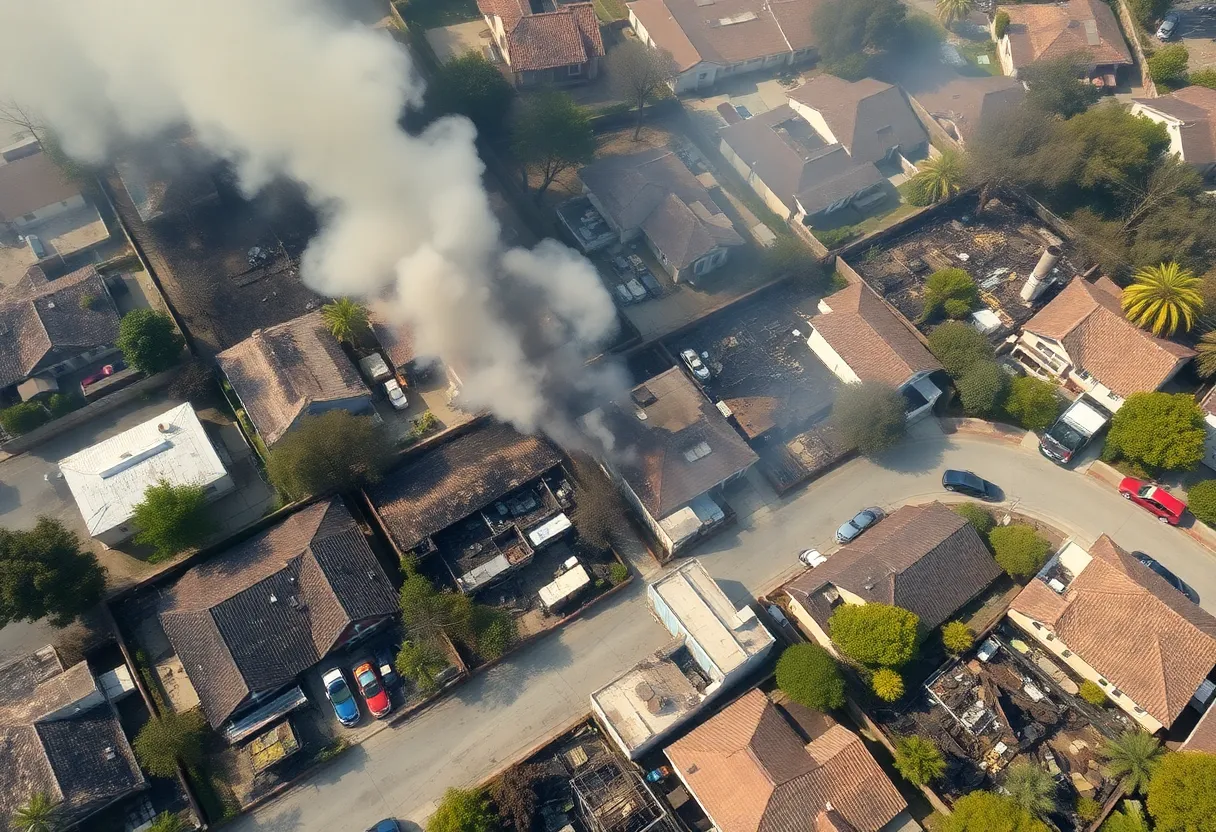News Summary
The Eaton Fire has drastically increased asbestos levels, raising health concerns for residents. Senator Schiff emphasizes the need for urgent cleanup.
Health Risks Surface After Eaton Fire: Asbestos Found in Burn Areas
The recent Eaton Fire in Altadena has alarmingly increased the prevalence of asbestos within its burn areas, far exceeding levels reported in the Palisades Fire. Reports indicate that approximately 50% of the properties affected by the Eaton Fire have tested positive for asbestos, a staggering figure compared to the 31% positive rate following the Palisades Fire. This troubling statistic raises concerns about the health implications for residents in both affected communities.
Senatorial Attention on Asbestos Cleanup
Senator Adam Schiff has taken a proactive stance, visiting the Eaton Fire site to discuss comprehensive cleanup efforts. With numerous reports highlighting the impact of asbestos on the cleanup timeline, the urgency for remedial actions becomes more evident. The U.S. Army Corps of Engineers has taken charge, reporting that as of March 8, they have completely cleared 2,269 properties of hazardous materials due to both wildfires.
Extent of Damage from Recent Wildfires
The destruction from the wildfires has been immense, with over 16,000 structures—including homes, garages, and sheds—permanently lost in January’s devastating flames. Residents of the affected areas face dire circumstances, as teams assess the damage, with reports of 1,422 properties completely destroyed and an additional 212 showing signs of significant damage.
Hazardous Material Exposure Risks
Health officials have raised red flags regarding potential exposure risks from asbestos, lead, and other hazardous materials lingering in the air and soil at and around the fire sites. The LA County Department of Public Health firmly warns that homes found within 250 yards of the burn sites remain at risk for exposure to harmful substances. These hazards underscore the necessity of public safety measures, as airborne threats such as lead and polyaromatic hydrocarbons have been identified by UCLA researchers.
Asbestos Presence in Older Structures
In a concerning trend, many of the homes destroyed or damaged during the fires were built before 1980—an era before strict regulations on asbestos use were implemented. Reports indicate that a staggering 73% of homes in the affected areas were constructed prior to these vital laws. This raises the possibility of exceptionally high levels of asbestos being released during the fires.
Protective Measures and Community Response
In light of these hazardous materials, residents living near the affected areas are being advised to wear properly fitted N95 or P100 masks to mitigate inhalation of asbestos fibers. Furthermore, a free debris removal program is being offered to property owners, although currently only 1,200 out of the 6,000 eligible homes have registered for the program, with a deadline set for March 31.
Utilities and Contamination Woes
Mark Pestrella, the Director of LA County Public Works, has indicated that the water in evacuated zones may be contaminated and not up to state treatment standards. As communities begin to reopen after previous evacuation orders, residents are left grappling with a profound sense of loss and uncertainty. Many homes, though still standing, remain unsafe due to contamination, posing health risks that may extend beyond immediate fire damage.
Assistance and Community Support Efforts
In response to the tragedy, various assistance programs have been launched to help residents cope. Evacuated individuals are benefiting from the suspension of utility billing, providing some relief in a time of uncertainty. Community meetings have taken place to address safety and health risks, highlighting the ongoing conversation about the well-being of residents as they navigate this crisis.
The aftermath of the Eaton Fire serves as a stark reminder of the potential long-term dangers associated with asbestos exposure. As cleanup efforts continue, both immediate and future health implications remain a pressing concern for all affected communities.
Deeper Dive: News & Info About This Topic
HERE Resources
The Hidden Danger in Beauty Products: Talc and Asbestos Contamination
Baie Verte’s Abandoned Asbestos Mine Undergoes Transformation
Justice Secured for Mesothelioma Victim Thomas R. Sorrentino
Asbestos: A Silent Killer for Veterans and City Residents in San Diego
Warren Buffett’s Company Under Fire for Talc Sales Linked to Mesothelioma
Mesothelioma: A Deadly Legacy of Asbestos Exposure
Startling Discoveries Reveal Lack of Awareness About Asbestos Risks
Asbestos Continues to Haunt Veterans: A Hidden Epidemic
Controversial Proposal to Reintroduce Asbestos Throws Australia into Debate
Asbestos Threat Looms Over Government Properties in Honiara
Additional Resources
- CBS News: More Fire-Torn Altadena Homes Test Positive for Asbestos
- Wikipedia: Asbestos
- ABC7: Toxic Dangers Linger Inside Altadena Homes
- Google Search: Eaton Fire Altadena
- Pasadena Now: Health Officials Warn of Toxic Hazards
- Google Scholar: Eaton Fire Toxic Hazards
- Reuters: Environmental Workers Race to Clear Toxic Debris
- Encyclopedia Britannica: Wildfires



















